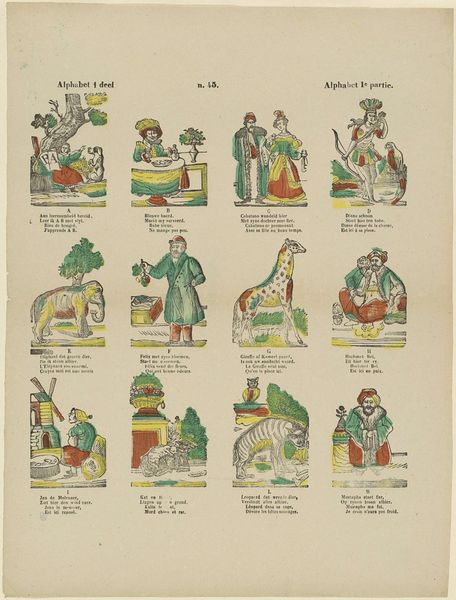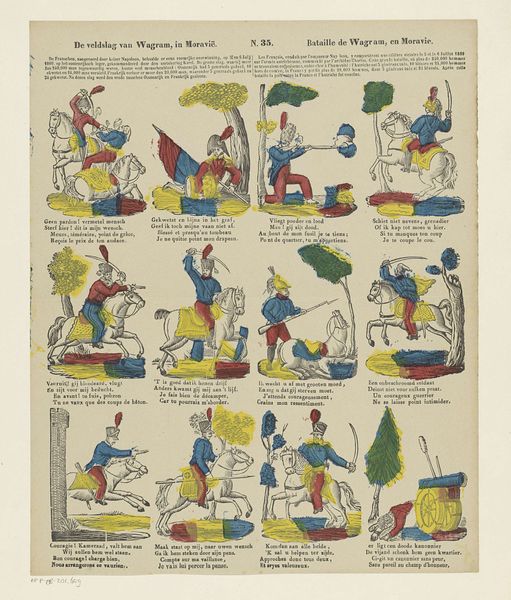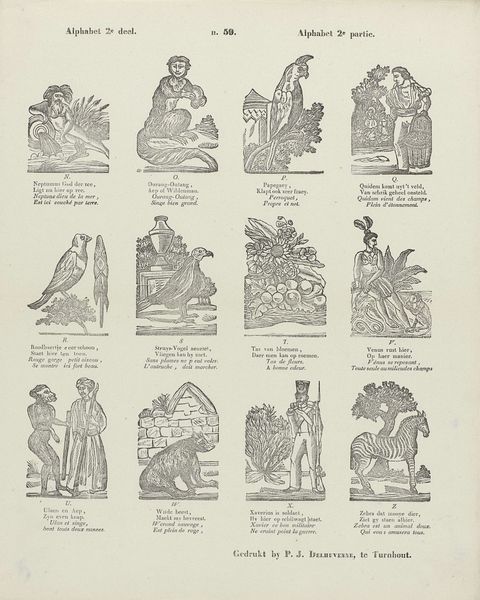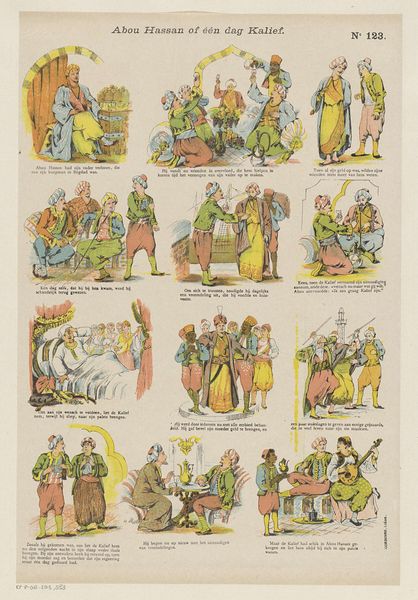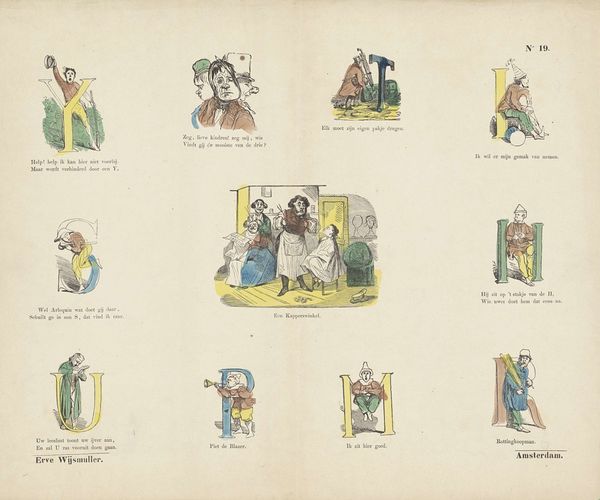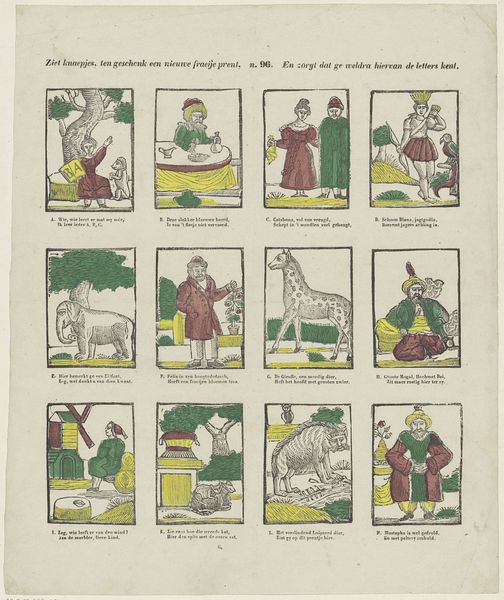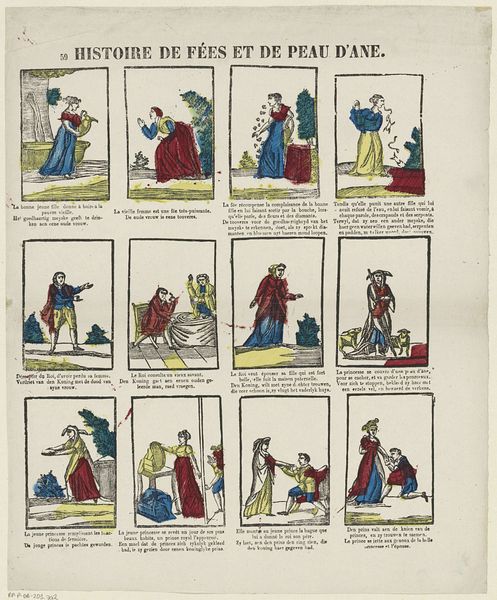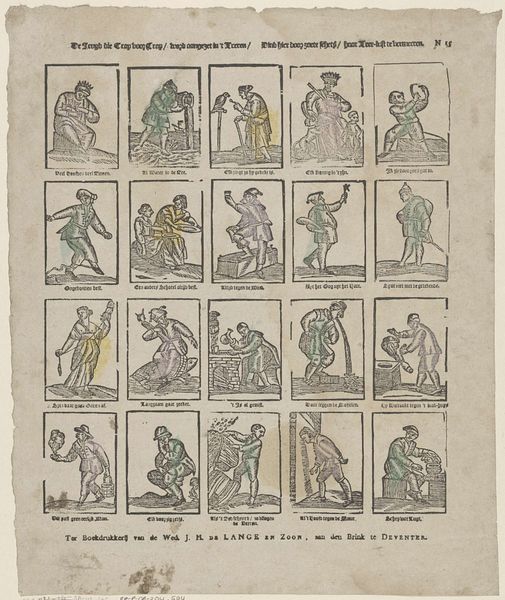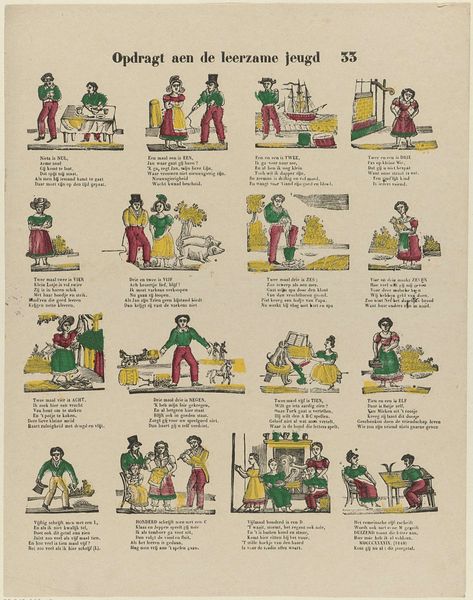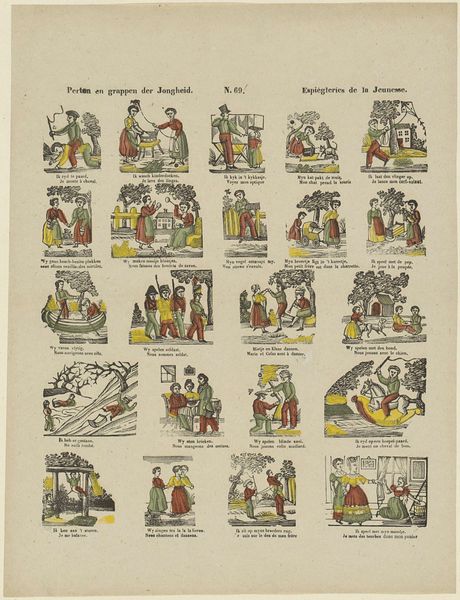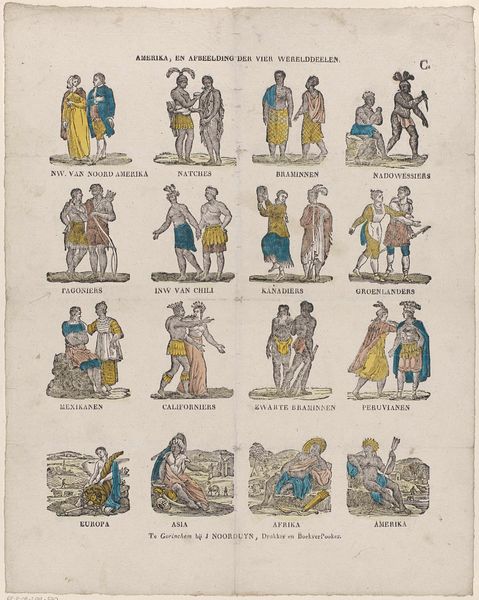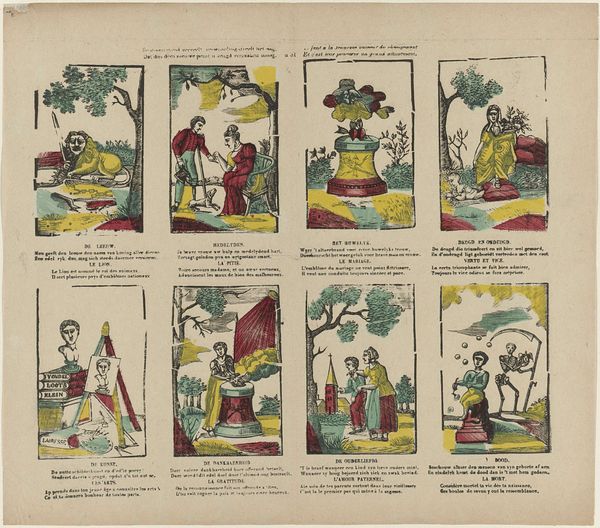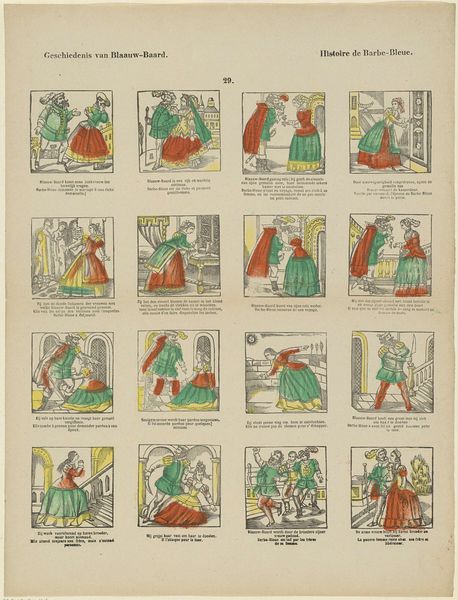
lithograph, print
#
narrative-art
#
comic strip
#
lithograph
# print
#
old engraving style
#
figuration
#
academic-art
Dimensions: height 420 mm, width 314 mm
Copyright: Rijks Museum: Open Domain
Curator: Let’s delve into this lithograph, "A B C 2e deel / Alphabet 2e partie" by Glenisson & Zonen, dating roughly between 1856 and 1900. We see a playful, if somewhat unsettling, array of images arranged alphabetically. Editor: My first impression is one of childhood tinged with colonial undertones. The bright, simplistic colors mask a deeper, perhaps unconscious, dissemination of power structures. The alphabet as a tool of indoctrination, perhaps? Curator: Precisely. The piece reveals so much about 19th-century pedagogical methods interwoven with emerging global perspectives. Notice the characters chosen for each letter – Neptune, an orangutan, a soldier – each carrying their own symbolic and political weight. Editor: The orangutan is particularly striking. Representing "O," it’s labelled “Orang-Outang, Aap of Wildeman." The dehumanization is thinly veiled. How does this imagery reflect the burgeoning scientific racism of the era? Curator: That’s a vital point. This connects to broader discussions about the rise of scientific racism and colonial representation. The "U" features a man with markedly darker skin than his european-appearing companion – captioned “slaaf en aap” (slave and ape). We must address that this “alphabet” not only teaches language, but also perpetuates deeply problematic hierarchies. Editor: Even the choice of a zebra for "Z," depicted awkwardly beneath a tree as if a strange exhibit, evokes ideas of the exotic "other," categorized and possessed. What cultural memory does it tap into through such visual shorthand? Curator: It's a reflection of a Western worldview, defining and appropriating the non-European world into a readily consumable package. This lithograph is a complex, disturbing mirror reflecting societal values back at us. Editor: Studying it brings together an intersectional discourse of gender, race, and class inherent in these early learning tools. This makes the piece incredibly relevant today in conversations of how knowledge has long been presented to the global audience. Curator: It highlights that even something seemingly innocuous like an alphabet can be a powerful carrier of dominant ideology. I'm left thinking about the ongoing challenge of dismantling those encoded biases. Editor: Absolutely, by decoding the imagery, we hopefully move towards a decolonized way of interpreting not just art, but culture at large. It leaves me reflecting on visual cues embedded into knowledge systems today.
Comments
No comments
Be the first to comment and join the conversation on the ultimate creative platform.
